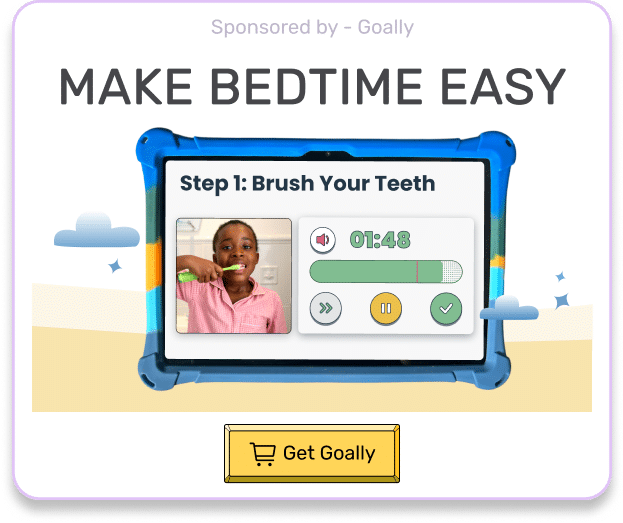As a parent, you want the best for your kid, especially when it comes to their development. That’s where MCHAT screening comes in, offering valuable insights into your child’s growth. In this blog post, we’ll explore the ins and outs of MCHAT screening, its benefits, and how to use it effectively. We’ll also discuss the importance of early intervention and share resources to support your child’s journey. So, let’s begin this essential adventure of understanding and nurturing your child’s unique abilities.
Table of Contents
What is MCHAT Screening?
MCHAT (Modified Checklist for Autism in Toddlers) screening is a trusted, evidence-based tool designed to identify early signs of autism spectrum disorder (ASD) in children aged 16 to 30 months. It consists of 20 straightforward questions that assess your child’s communication, social, and behavioral skills. By completing the MCHAT screening, you can gain valuable insights into your child’s development and, if necessary, seek early intervention services to support their growth.
But why is MCHAT screening so important? To put it simply, early detection can make a world of difference for neurodivergent kids. Here are some key benefits of MCHAT screening:

- Early detection: MCHAT screening can help identify ASD symptoms before they become more pronounced, allowing for timely intervention.
- Improved outcomes: Research shows that early intervention can significantly improve the long-term outcomes for neurodivergent kids.
- Empowerment: As a parent, understanding your child’s unique needs can help you make informed decisions and advocate for their well-being.
How to Use MCHAT Screening
Using MCHAT screening is simple and can be completed in just a few minutes. Here’s a step-by-step guide to assist you in the process:
- Find a reliable source: Access the MCHAT screening questionnaire from a reputable source, such as your pediatrician’s office or an accredited online platform.
- Answer the questions: Respond to each question based on your child’s typical behavior, not their best or worst moments.
- Review the results: After completing the questionnaire, review the results to determine if your child is at risk for ASD.
- Seek professional guidance: If the MCHAT screening indicates a potential risk, consult with a healthcare professional for further evaluation and support.
It’s important to remember that MCHAT screening is not a diagnostic test. A positive result doesn’t necessarily mean your child has ASD, and a negative result doesn’t guarantee they don’t. MCHAT screening is most effective when used in conjunction with other assessments and professional evaluations.
The Importance of Early Intervention
Early intervention is crucial for kids with thinking and learning differences, as it can significantly impact their long-term success. For example, research has shown that children who receive early intervention services tend to have better communication skills, increased social competence, and improved cognitive abilities. Furthermore, early intervention can also provide much-needed support for parents, helping them better understand their child’s needs and develop effective strategies to promote their growth.

Read more: 18 Month Old Autism Screening
There are various early intervention services available to support neurodivergent kids, including:
- Speech and language therapy: Helps improve communication skills and language development.
- Occupational therapy: Focuses on developing fine motor skills, sensory processing, and daily living activities.
- Behavioral therapy: Aims to reduce challenging behaviors and promote positive social interactions.
- Parent training: Provides guidance and support to help parents effectively address their child’s unique needs.
Resources for Parents
As a parent of a neurodivergent child, it’s essential to have access to reliable resources and support networks. Here are some valuable resources to assist you on your journey:
- Local early intervention programs: Reach out to your early intervention program near you for guidance and support services tailored to your child’s needs.
- Online communities: Connect with other parents of neurodivergent kids through online forums and social media groups to share experiences, advice, and encouragement.
- Professional organizations: Organizations such as the American Academy of Pediatrics and the National Institute of Mental Health offer valuable information and resources related to ASD and early intervention.
Don’t forget about Goally, a learning tablet designed specifically for neurodivergent kids. Goally offers a range of apps and resources to support your child’s growth and development, making it an excellent addition to your toolkit.
In short, MCHAT screening is an invaluable tool for parents of neurodivergent kids, helping to identify early signs of ASD and paving the way for timely intervention. By understanding the importance of early detection and seeking appropriate support, you can make a significant difference in your child’s life. So, take advantage of MCHAT screening and the resources available to you, including Goally, and embrace the journey of nurturing your child’s unique abilities and potential.
FAQ’s About MCHAT Screening
What is the M-CHAT screening tool? The M-CHAT (Modified Checklist for Autism in Toddlers) is a widely used screening tool designed to identify early signs of autism spectrum disorder (ASD) in toddlers aged 16 to 30 months.
How does the M-CHAT screening work? The M-CHAT screening involves a series of questions that parents or caregivers answer about their child's behavior and development, helping to identify potential red flags for ASD.
When should I consider using the M-CHAT screening? The M-CHAT screening is recommended for all toddlers at their 18-month well-child visit, but it can be used at any age if there are concerns about a child's social communication skills.
What are the benefits of using the M-CHAT screening? Using the M-CHAT screening can help detect early signs of ASD, enabling early intervention and treatment, which can significantly improve long-term outcomes for children.
Can the M-CHAT screening provide a definitive diagnosis of autism? No, the M-CHAT screening is not a diagnostic tool, but rather a screening tool that helps identify children who may need further evaluation by a healthcare professional specializing in ASD.
This post was originally published on 05/29/2023. It was updated on 07/05/2023.

Goally
We help parents teach their kids life skills, like doing bedtime and morning independently. Backed by science, we incorporate evidence-based practices and expert-informed designs in all of our apps and content.






